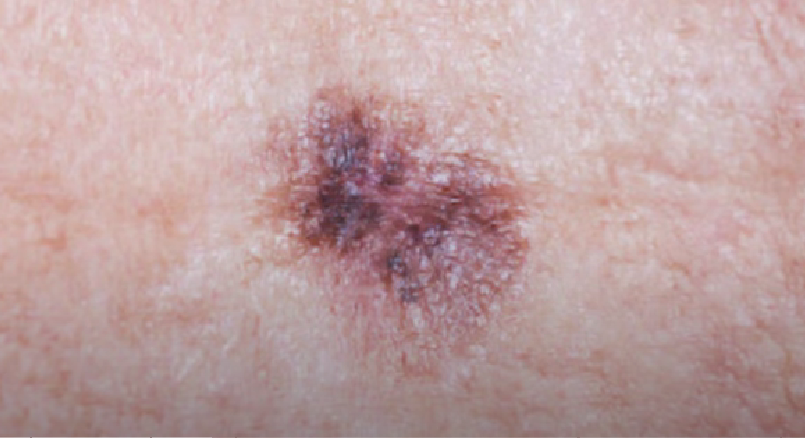Introduction
Skin cancer is one of the most common types of cancer worldwide. Among the many types, melanoma and squamous cell carcinoma (SCC) are two that often cause confusion due to their similarities. However, understanding their key differences is crucial for early detection and treatment. This blog dives deep into the distinctions between melanoma and squamous cell carcinoma, covering symptoms, risk factors, treatment options, and prevention.
Table of Contents
Melanoma vs Squamous Cell Carcinoma
Melanoma is a highly aggressive form of skin cancer that originates from melanocytes, the cells responsible for skin pigment. Squamous cell carcinoma is less aggressive but more common, originating from the squamous cells in the epidermis. Early detection of either cancer improves the chances of successful treatment.
What is melanoma?
Melanoma is a malignant tumor that develops from melanocytes, the cells responsible for producing melanin, the pigment that gives skin its color. Though less common than other skin cancers, melanoma is the most aggressive and life-threatening if not caught early.

Key Characteristics of Melanoma:
- Appearance: Melanomas typically appear as asymmetrical, irregularly bordered moles or skin lesions with multiple colors (black, brown, pink, red).
- Location: While they can develop anywhere on the body, they often appear in areas exposed to the sun (back, legs, arms, and face).
- Risk Factors: Family history, excessive UV exposure, fair skin, and a history of sunburn increase melanoma risk.
- Symptoms: Look for the ABCDEs of melanoma – Asymmetry, Border irregularity, Color variation, Diameter larger than a pencil eraser, and Evolving shape or size.
What is squamous cell carcinoma?
Squamous cell carcinoma is a type of skin cancer that originates in the squamous cells, which are found in the outer layer of the skin (epidermis). SCC is less aggressive than melanoma but more common, and it can become dangerous if left untreated.

Key Characteristics of Squamous Cell Carcinoma:
- Appearance: SCC often appears as rough, scaly patches, open sores, or wart-like growths. The lesions may bleed or crust.
- Location: Commonly found on sun-exposed areas such as the scalp, face, ears, and hands, though they can develop anywhere.
- Risk Factors: Chronic sun exposure, tanning bed use, and fair skin increase the likelihood of developing SCC.
- Symptoms: Persistent sores or growths that don’t heal, and lesions that may bleed or grow over time.
Melanoma vs. Squamous Cell Carcinoma: Key Differences
| Factor | Melanoma | Squamous Cell Carcinoma |
|---|---|---|
| Cell Origin | Melanocytes (pigment-producing cells) | Squamous cells (epidermis) |
| Aggressiveness | Highly aggressive, can metastasize quickly | Less aggressive, slower to spread |
| Appearance | Irregular moles, varied colors | Scaly patches, rough growths |
| Common Locations | Back, legs, arms, face (sun-exposed areas) | Face, ears, hands, scalp |
| Risk Factors | UV exposure, genetics, fair skin, history of sunburn | Chronic sun exposure, fair skin, tanning beds |
| Treatment Options | Surgical removal, immunotherapy, radiation | Surgical excision, cryotherapy, radiation |
Treatment Options for Melanoma and Squamous Cell Carcinoma
Melanoma Treatment
- Surgical Removal: Early-stage melanomas can often be removed surgically.
- Immunotherapy: Helps boost the body’s immune response to fight cancer cells.
- Targeted Therapy: Used when genetic mutations are identified in melanoma cells.
- Radiation Therapy: May be used if the cancer has spread to other parts of the body.
Squamous Cell Carcinoma Treatment
- Surgical Excision: The most common treatment to remove SCC, especially for small, localized cancers.
- Cryotherapy: Freezing cancerous cells with liquid nitrogen, often for early-stage SCC.
- Mohs Surgery: A precise surgical technique that removes cancer layer by layer, minimizing tissue damage.
- Radiation Therapy: Used for larger tumors or in areas where surgery might be difficult.
Prevention Tips
For Both Melanoma and SCC:
- Use Sunscreen: Always apply broad-spectrum SPF 30 or higher when exposed to the sun.
- Avoid Tanning Beds: UV radiation from tanning beds can significantly increase the risk of both melanoma and SCC.
- Wear Protective Clothing: Long sleeves, wide-brimmed hats, and sunglasses can help reduce sun exposure.
- Regular Skin Checks: Visit a dermatologist for routine skin checks, especially if you have a family history of skin cancer or are at high risk.
FAQs
-
Is melanoma more dangerous than squamous cell carcinoma?
Yes, melanoma is more aggressive and likely to spread to other parts of the body if not treated early, making it more dangerous than SCC.
-
Can squamous cell carcinoma turn into melanoma?
No, they are two different types of skin cancer with distinct origins. SCC cannot transform into melanoma.
-
What are the survival rates for melanoma and SCC?
The survival rates for melanoma depend on the stage at diagnosis. Early-stage melanoma has a higher survival rate, while advanced melanoma is more challenging to treat. SCC generally has a good prognosis if caught early.
-
How can I tell if a skin lesion is cancerous?
Look for changes in size, shape, color, or texture. If a lesion bleeds, itches, or doesn’t heal, consult a dermatologist for evaluation.
-
Can I prevent both melanoma and squamous cell carcinoma?
While it’s impossible to eliminate the risk entirely, taking preventive steps like sun protection, avoiding tanning beds, and regular skin checks can significantly reduce the risk.
Related Posts
- Why are living organisms classified? : Biological Classification
- Wildlife Conservation Efforts in India
- Best Time to Visit Kaziranga National Park: Complete Guide
- How to Tell Wild Animals Questions and Answers: A Detailed Guide
- How to Tell Wild Animals Summary: A Fun and Engaging Overview

